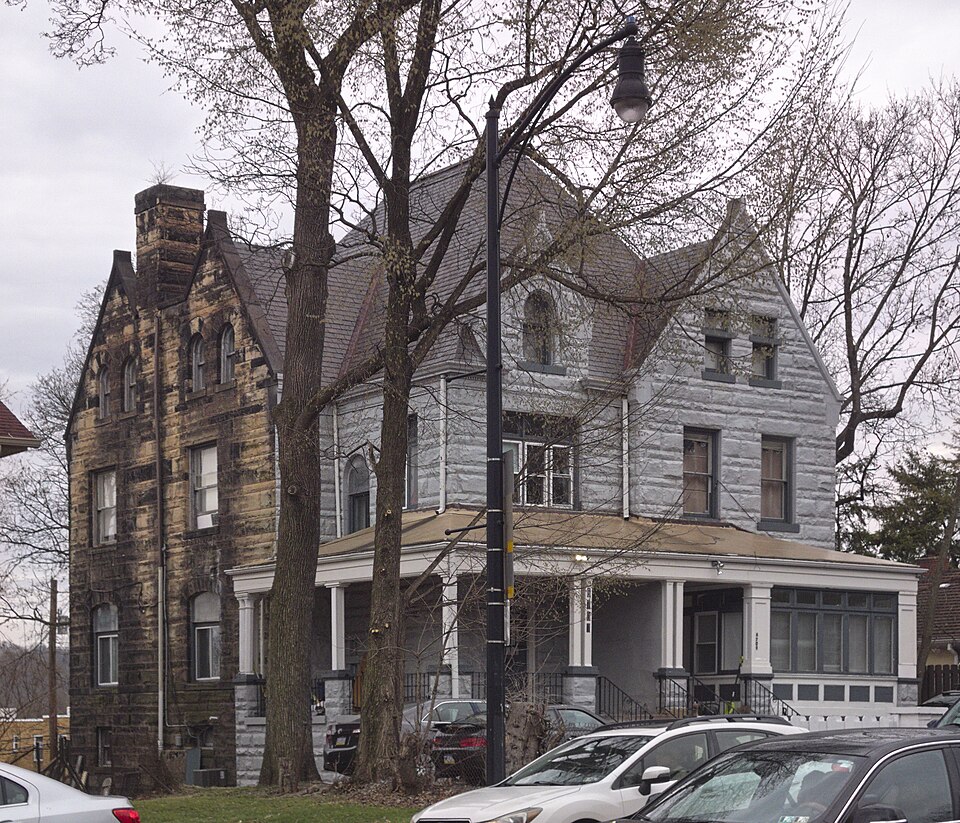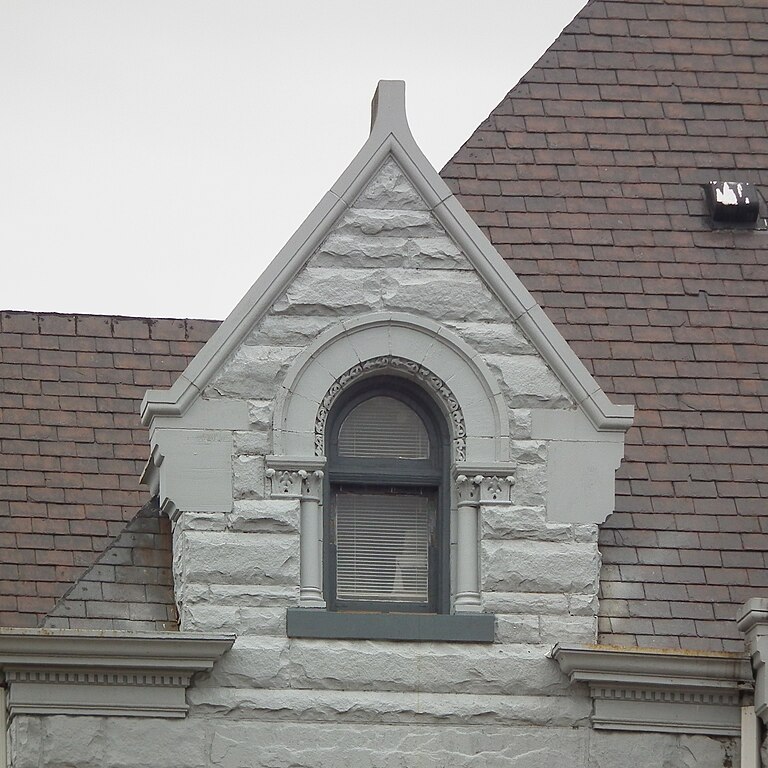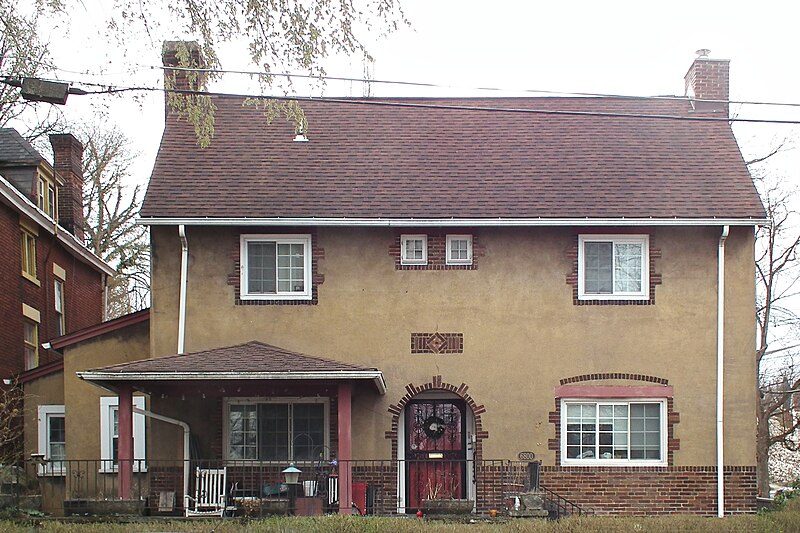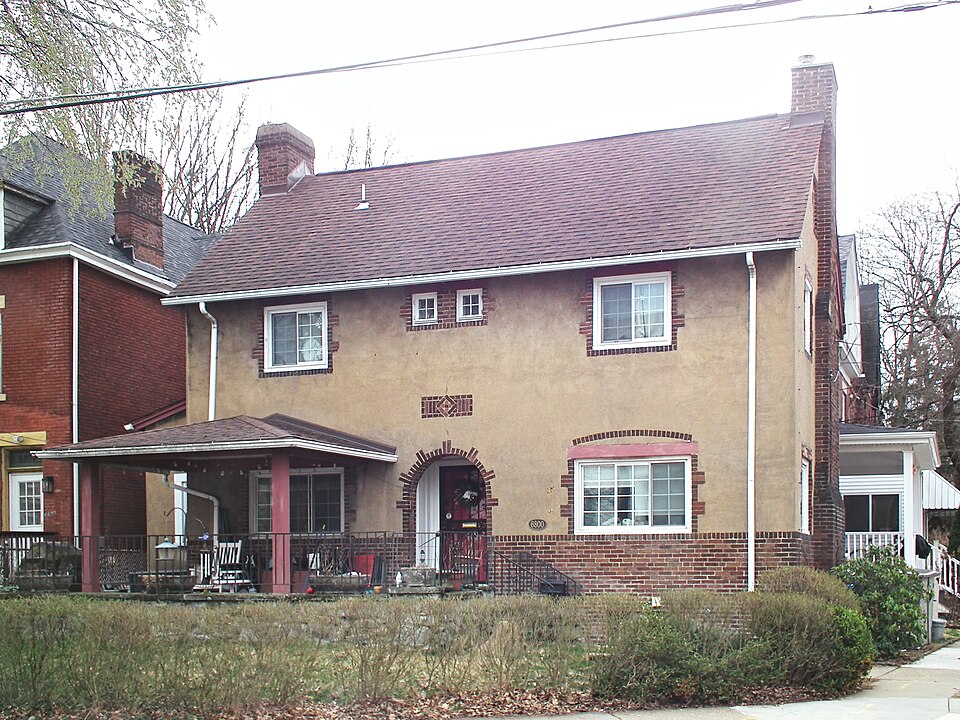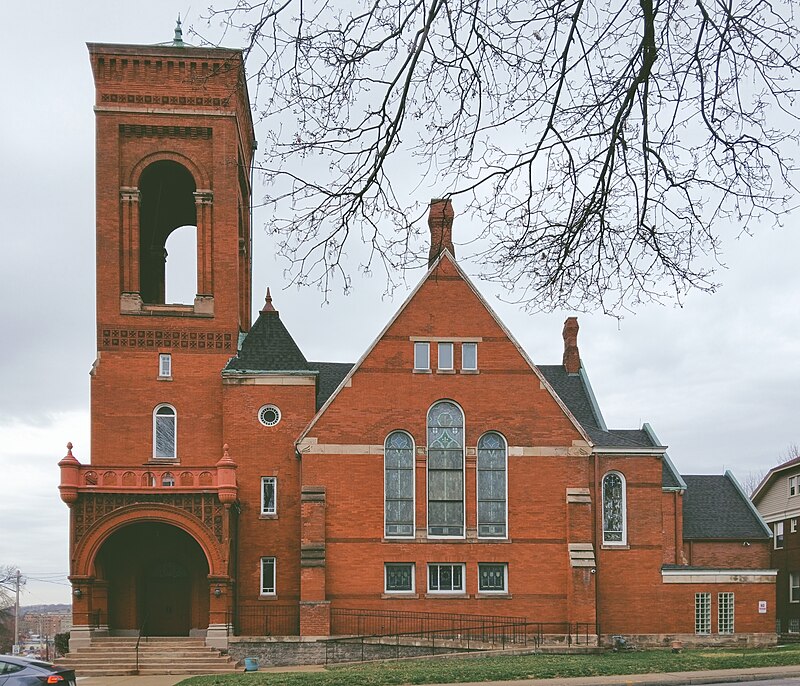
Four different houses in four different styles. We begin with the biggest: a Georgian mansion with a gambrel roof, built a little before 1910.



A classic foursquare on a generous scale, with “modern Ionic” porch columns and classical detailing in the dormer and oriel.



This “old English” design has some fancy brickwork and even fancier woodwork in the gable, partly obscured by vines.


Finally, an eclectic design of the type Pa Pitt often calls “center-hall foursquare,” with a harmonious mixture of influences from Georgian to Prairie Style.

Comments



















